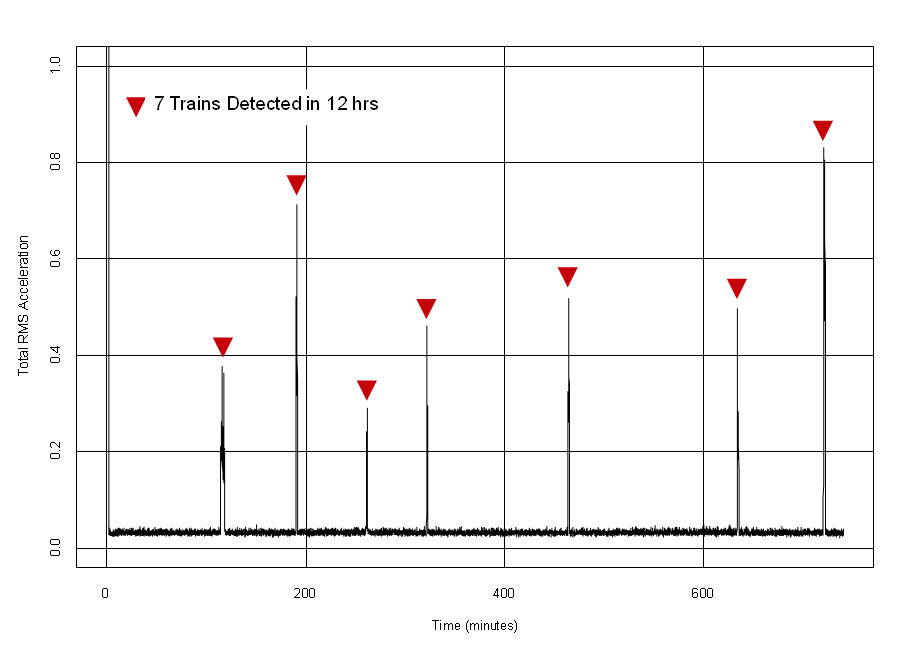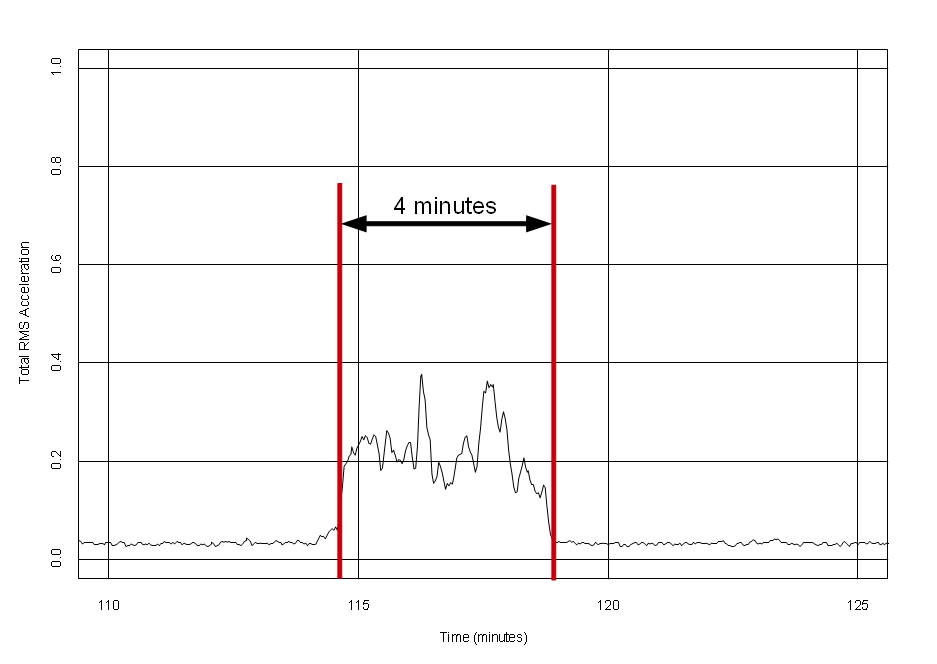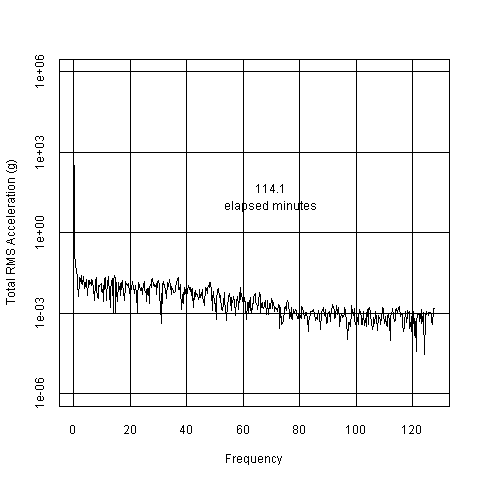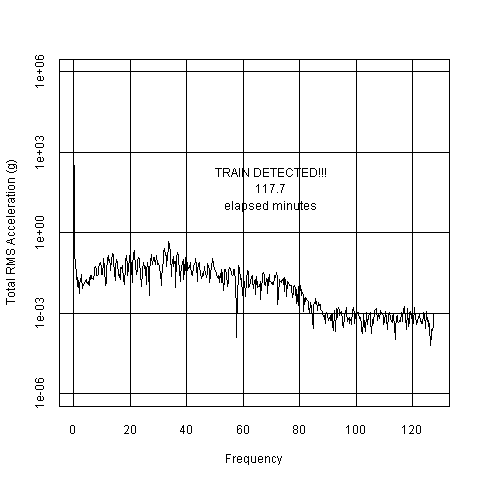Introduction

For those who have experienced tornadoes and hurricanes, the extreme winds roaring overhead can sound like a passing freight train. It's an eery and frightening sound that seems to shake the earth. Fortunately, we have not had the opportunity to study this phenomenon directly. However, a nearby railway allowed us to evaluate the vibration of a freight train using the X2-5 logger. Is the vibration similar to a tornado or hurricane? Let's hope we don't find out...
A detailed description of the test procedure, analysis method, and results are documented in our test report Detecting a Freight Train.
Objective
The test analyzed data collected from an X2-5 accelerometer data logger to detect vibration caused by the passing of freight trains.
Procedure
The vibration from a freight train is very broad spectrum, but this analysis used the infrasonic range (<20Hz). The logger was configured to collect constantly at 256Hz, which allowed a 0-128Hz frequency band spectrum from the Fast Fourier Transform (FFT).
The X2-5 is a compact self-contain recording instrument and is easily concealed. The logger was attached to a small rock to help keep the logger in place, touching the ground. The logger was started and then tossed into the grass about 30 feet from the railway.
Data collection started at approximately 9am and ended at 9pm, when the device was recovered. The data was processed using the "R" script available here.
Results
The first plot summarizes the total RMS acceleration detected in the infrasonic range (between 1-20 Hz) throughout the 12 hour period. This method provided an easy indication of a passing train.

The next plot is a closer look at the first train detected. The train took 4 minutes to pass by.



Discussion
The results are yet to be verified whether or not the vibration of a freight train equates to a tornado. Honestly, this is a question best left unanswered.
Given the intensity of the vibration, there was no need in placing the X2-5 so close to the railway. Low frequency vibration travels much easier than higher frequencies, so the logger could be placed further from the tracks. A follow-up experiment may investigate the furthest distance allowed to detect a train. In this case, coupling to the ground is important and may require mounting the X2-5 into the ground.
Conclusion
Using the X2-5 provided an easy indication of a passing train using the infrasonic range.
"Infrasonic" is a range of frequencies below the typical capability of human hearing (<20 Hz). There is evidence that people are aware of such low frequencies at a subconscious level. Some people speculate that infrasonics influence our state of awareness and could be a basis of haunted houses and paranormal phenomenon. Can the X2-5 logger detect ghosts? Hmmm...